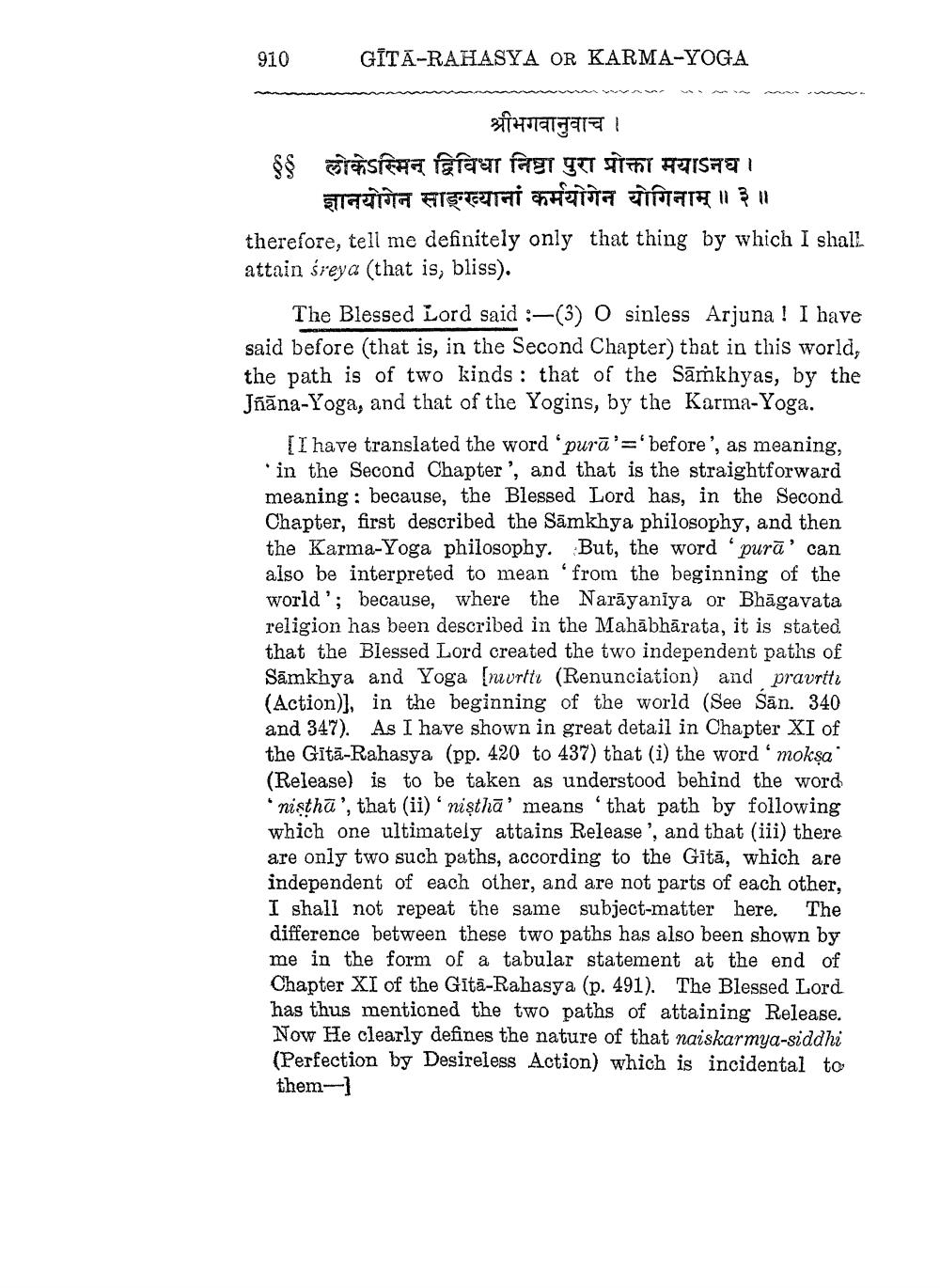________________
910
GITA-RAHASYA OR KARMA-YOGA
Helgare ! ६ लोकेऽस्मिन् द्विविधा निष्टा पुरा प्रोक्ता मयाऽनघ ।
ज्ञानयोगेन साख्यानां कर्मयोगेन योगिनाम् ॥ ३ ॥ therefore, tell me definitely only that thing by which I shall attain śreya (that is, bliss).
The Blessed Lord said :-(3) O sinless Arjuna ! I have said before (that is, in the Second Chapter) that in this world, the path is of two kinds: that of the Samkhyas, by the Jñana-Yoga, and that of the Yogins, by the Karma-Yoga.
[ I have translated the word 'purā'='before', as meaning, ' in the Second Chapter', and that is the straightforward meaning : because, the Blessed Lord has, in the Second Chapter, first described the Sāmkhya philosophy, and then the Karma-Yoga philosophy. But, the word 'purā' can also be interpreted to mean from the beginning of the world'; because, where the Narāyaniya or Bhagavata religion has been described in the Mahābhārata, it is stated that the Blessed Lord created the two independent paths of Samkhya and Yoga (rvrtti (Renunciation) and pravrttı (Action)], in the beginning of the world (See Sān. 340 and 347). As I have shown in great detail in Chapter XI of the Gītā-Rahasya (pp. 420 to 437) that (i) the word ' mokşa' (Release) is to be taken as understood behind the word * nisthā', that (ii)' nişthā' means that path by following which one ultimately attains Release', and that (iii) there are only two such paths, according to the Gītā, which are independent of each other, and are not parts of each other, I shall not repeat the same subject-matter here. The difference between these two paths has also been shown by me in the form of a tabular statement at the end of Chapter XI of the Gīta-Rahasya (p. 491). The Blessed Lord has thus mentioned the two paths of attaining Release. Now He clearly defines the nature of that naiskarmya-siddhi (Perfection by Desireless Action) which is incidental to them-]




